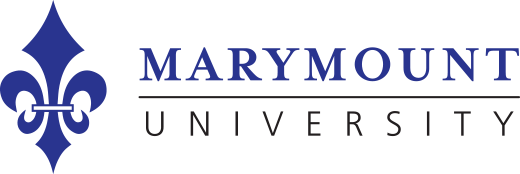Current Issues in Education: 5 Challenges Facing Educational Leaders

Blog Updated on January 16, 2025.
Alicia Hunter, a public educator who has worked as both a classroom teacher and district administrator, has witnessed firsthand the challenges that schools face on a daily basis. Whether they are modernizing their classrooms or creating instructional programs, Hunter and her fellow educators regularly experience challenges of leadership that require strategic responses and well-honed problem-solving skills.
When educators meet these challenges, the results can pay massive dividends.
A prime example is what happened at Riverside Elementary, a rural school in Degraff, Ohio. Approximately 43% of the school’s students live in poverty, and only half of Riverside’s third-grade students were demonstrating proficiency in English language arts.
Educators struggled to support these students as scheduling difficulties and a lack of sustainable programming often thwarted successful interventions. So educational leaders at Riverside decided to take a multidisciplinary, teacher-based teams approach to the problem, focused on staff collaboration, evidence-based curricula and universal student screening. Three years later, the students’ English language arts proficiency levels had risen to 91%.
Throughout the country, educators are rising to meet common leadership challenges with creativity and determination. Consider five key current issues in education, and discover the innovative leadership skills that educational leaders need to promote students’ success.
1. Responding to Artificial Intelligence
The rapidly evolving uses of artificial intelligence (AI) tools have impacted many areas of daily life, and education is no exception. As one example of this, a 2023 Pew Research Center survey revealed that 69% of teens familiar with the AI chatbot ChatGPT believe it’s acceptable to use the program for new topic research. As AI tools become more sophisticated, it’s likely that their presence in education will only grow, even if teachers aren’t necessarily fans of their intrusion.
Rather than try to fight these developments, educational leaders can instead use AI to enhance their students’ educational experience. They can find ways to integrate tools such as adaptive learning platforms, intelligent tutoring systems, automated essay grading and student support chatbots into their schools’ processes and curricula. With a collaborative mindset toward AI technology, leaders can improve educational efficiency and personalize the learning journey to suit each student’s needs.
2. Raising Equity in Talent Pipelines
Ask anyone in educational leadership what they are concerned about in their field, and you’ll likely hear the response, “teacher shortages.” The National Center for Education Statistics (NCES) reported that 74% of K–12 public schools had challenges filling at least one vacant teaching position with a completely certified teacher at the start of the 2024-25 academic year. Additionally, 73% reported having difficulty hiring for nonteacher positions, such as classroom aide and mental health professional jobs.
To overcome this challenge, educational leaders can turn to investing in programs and organizations that address the shortages in creative ways that encourage professional development and promote equity. For example, Women Leading Ed, a national organization that supports the advancement of women in educational leadership, provides resources for closing the gender gap in educational leadership. It aims to change the fact that while nearly 8 in 10 teachers are women, only 3 in 10 of the highest-level roles in school districts are held by women.
Educational leaders can participate in cultivating a diverse population of educators who reflect the demographics of their student bodies by initiating mentorship relationships, fostering open dialogues about barriers to entry and partnering with organizations that provide leadership training for educators who want to advance their careers.
3. Revising Academic Assessments
Another of the pressing current issues in education involves how schools gauge student performance. While letter grades and standardized tests may provide insight into students’ achievement, many educational leaders are calling for a reimagining of student assessment measures. While declining mathematics scores ring an alarm bell that prompts some to double down on traditional grading systems, innovative educators are finding that creative assessment approaches can foster greater academic success.
Many educational leaders find themselves limited by required state testing or assessment mandates. However, even these educators can apply creative assessment tools in their classrooms that generate positive feedback and increase students’ engagement throughout the school year.
Rather than simply assessing students’ knowledge through texts, quizzes or exams that mirror standardized approaches, educators can check in with students’ progress via:
- Class discussions
- Group projects
- Presentations
- Problem-solving activities
- Structured debates
- Written responses of various lengths
- Graphic organizers
- Digital, gamified assignments
Assessments of these learning processes may not replace standardized approaches, but they can accompany them. In doing so, they can reduce both students’ and teachers’ stress while infusing creativity and a love of learning into the classroom.
Additionally, given the increased presence of technology in education, educational leaders could use data analytics to develop strategies for assessing students. Techniques such as resource optimization and predictive modeling could help leaders identify which tools are most effective at deriving optimal information on students’ performance.
4. Continued Post-Pandemic Recovery
COVID-19’s impact continues to disrupt education today. Mental health concerns, chronic absenteeism and disengagement in the classroom indicate that recovery from the pandemic is still affecting schools. This can be particularly pronounced among students with special needs or those from underserved communities, who may also be facing a lack of resources and opportunity gaps.
Educational leaders can look to many of their peers nationwide to find creative, cost-effective ways to prioritize students’ mental health and engagement in their schools. The South River Public Schools district in central New Jersey, for example, experienced increased mental health issues and disciplinary issues due to the pandemic. They decided to try a program called Restorative Community Service, in which struggling students engaged in meaningful activities that helped others, reinforced their participation in the school community and provided space for reflection.
In addition to introducing innovative programs, educational leaders can advocate for permanent educational measures that provide students with greater learning opportunities, such as extended learning time or improved tutoring options. Leaders can also push for systemic changes that place a greater emphasis on relationship building and positive emotional development to overcome the lingering impacts of pandemic-fueled isolation.
5. Budget Constraints
One of the most significant current issues in education is poised to have even greater implications in the future. Shifts in federal education policies and projected ongoing declines in student enrollments mean that tight education budgets are likely to become even tighter. This could lead to additional educational challenges, from schools lacking the resources to give students a comprehensive learning experience to school closures.
To address these concerns, educational leaders can develop strategies that acknowledge the potential for increasingly strained budgets, optimize their existing resources and focus their funds on programs designed to improve their students’ success rather than on other priorities.
Rise to the Challenge
Whether you want to make a difference in your organization or community, earning an online Ed.D. in Educational Leadership and Organizational Innovation from Marymount University can empower you as a change agent ready to initiate and inspire.
This 100% online, flexible program includes courses such as:
- Leading an Organization: Theory, Practice & Reflection
- Ethical Leadership & Social Justice
- Transformative Leadership: Leading Organization Change
Learn how our Lead Doctorate Faculty Mentors (LDFMs) help you apply research and theory to solve a problem of practice facing your organization or community.
Connect with an enrollment advisor to get started.
